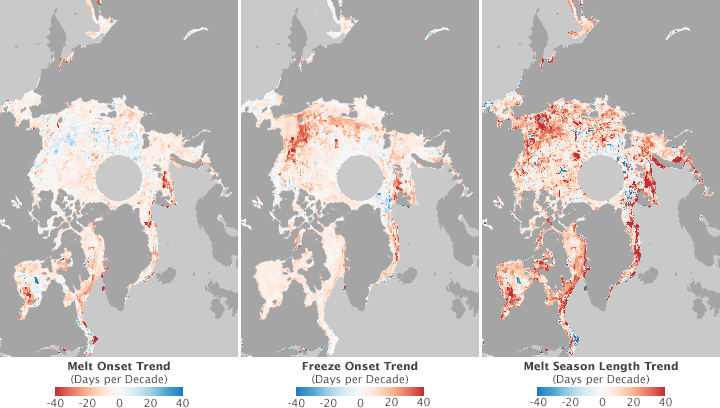Melting Arctic reflects ever less solar energy back into space
By Alister Doyle, Environment Correspondent; editing by David Stamp
OSLO | Sun Jan 16, 2011 8:45pm GMT (Reuters) – Shrinking ice and snow cover in the Northern Hemisphere is reflecting ever less sunshine back into space in a previously underestimated mechanism that could add to global warming, a study showed. Satellite data indicated that Arctic sea ice, glaciers, winter snow and Greenland’s ice were bouncing less energy back to space from 1979 to 2008. The dwindling white sunshade exposes ground or water, both of which are darker and absorb more heat. The study estimated that ice and snow in the Northern Hemisphere were now reflecting on average 3.3 watts per square meter of solar energy back to the upper atmosphere, a reduction of 0.45 watt per square meter since the late 1970s. “The cooling effect is reduced and this is increasing the amount of solar energy that the planet absorbs,” Mark Flanner, an assistant professor at the University of Michigan and lead author of the study, told Reuters. “This reduction in reflected solar energy through warming is greater than simulated by the current crop of climate models,” he said of the findings by a team of U.S.-based researchers and published in the journal Nature Geoscience Sunday. “The conclusion is that the cryosphere (areas of ice and snow) is both responding more sensitively to, and also driving, stronger climate change than thought,” he said. As ever more ground and water is exposed to sunlight, the absorbed heat in turn speeds the melting of snow and ice nearby. … The study estimated that each degree Celsius (1.8 degree Fahrenheit) rise in temperatures would mean a decline in solar energy reflected out to space of between 0.3 and 1.1 watts per square meter from the Northern Hemisphere’s snow and ice. Temperatures in the Northern Hemisphere have risen by about 0.75 degree Celsius in the past three decades. The study did not look at the Southern Hemisphere, where Antarctica has far more ice but is much colder and shows fewer signs of warming. “On a global scale, the planet absorbs solar energy at a rate of about 240 watts per square meter averaged over a year. The planet would be darker and absorb an additional 3.3 watts without the Northern Hemisphere cryosphere,” Flanner said.
